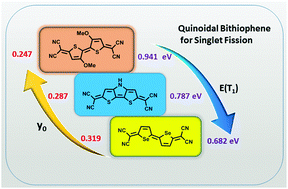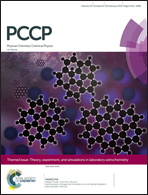Tuning the singlet fission relevant energetic levels of quinoidal bithiophene compounds by means of backbone modifications and functional group introduction†
Abstract
Efficient singlet fission (SF) has been obtained in quinoidal bithiophene, end-capped with dicyanomethylene groups (QBT). However, QBT suffers from low triplet state energy [E(T1)] because of its biradicaloid nature, which results in a great driving force for SF but also a large loss of energy during the SF process. This is not favorable for the application of SF in solar cells. Modifications to the molecular structure of QBT were performed to optimize the SF relevant excited state energy levels and its diradical character in the present study. This includes chalcogen replacement, the fusing of the heterocyclic ring between the two thiophene rings, and the introduction of side substituents. Detailed analysis focused on the correlation between the molecular structure of the QBT derivatives and their diradical character y0, bond length alternation (BLA), molecular orbitals, and SF relevant excited state energy levels. The results show that electron-donating substituents, particularly groups introduced at the inner β-positions of the thiophene ring, can increase E(T1) and reduce the energy loss of SF significantly under the premise of exothermic SF. These results would be beneficial to the development of new SF candidates for application in solar cells.



 Please wait while we load your content...
Please wait while we load your content...